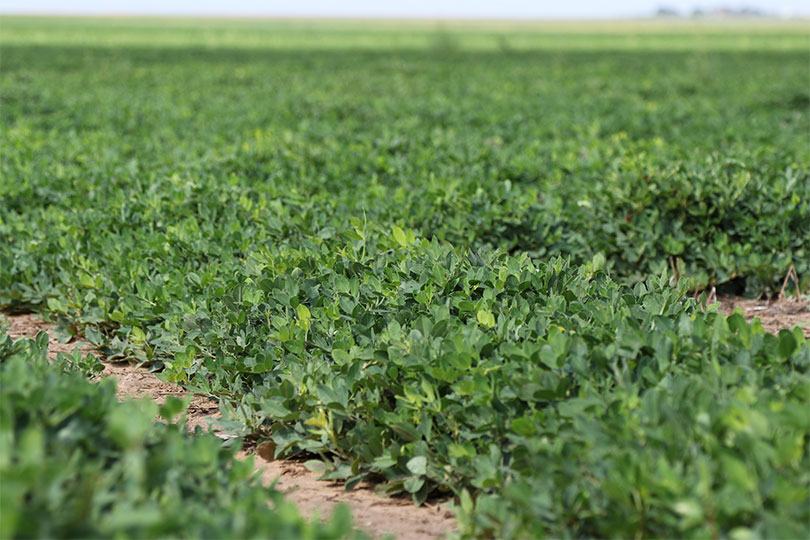By Tom Nicolette
Senior Network Producer
Farmers across Texas and in other peanut-producing states have been reducing their environmental footprint by using less water on their crops.
“Over the years, peanut production has focused on the amount of water usage. One of the main drivers of that is the Ogallala Aquifer in West Texas is decreasing very rapidly. So, growers are increasingly facing the prospect of growing peanuts on less water in any given year,” said Johnny Cason, a peanut plant breeder with Texas A&M AgriLife Extension Service in Stephenville.
According to the National Peanut Board, farmers are now using an average of 3.2 gallons of water to produce an ounce of shelled peanuts. That number is down from 4.7 gallons in 2010. And farmers have increased production by 50% with fewer inputs, including irrigation, than they were 10 years ago.
In South Central Texas, the proximity to urban areas also influences how farmers grow peanuts.
“Urban encroachment tends to impact the amount of water they have available for production,” Cason said in an interview with the Texas Farm Bureau Radio Network.
To help address water usage, the Texas Peanut Producers Board has provided funds to Texas A&M University for more than 10 years to develop drought-tolerant peanuts.
During the current drought in the peanut-growing regions of Texas, the drought tolerant program proves beneficial.
“With the water table getting lower every year, growers are facing the prospect of there being less water available both from rain and irrigation in the future,” Cason said. “The drought-tolerance (program) is a must if peanut production is going to continue in Texas.”
Planting season begins in early May in West Texas and continues into June in South Central Texas. Harvest starts in October and runs through late November.

